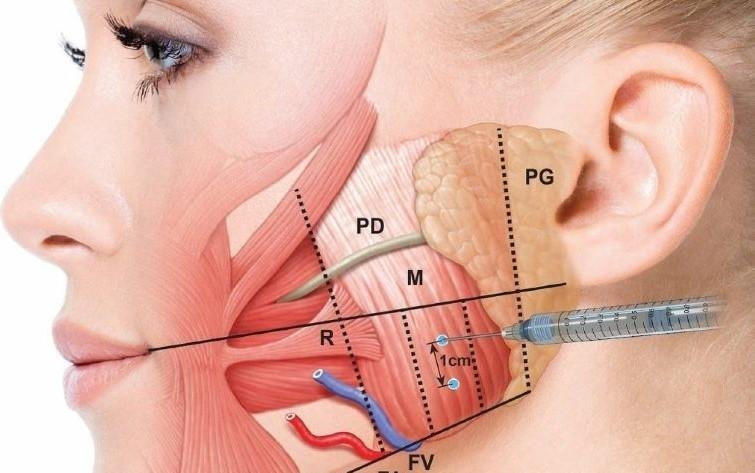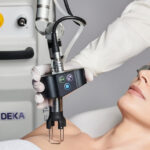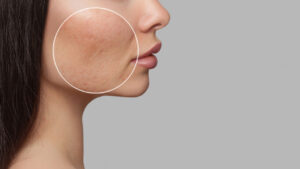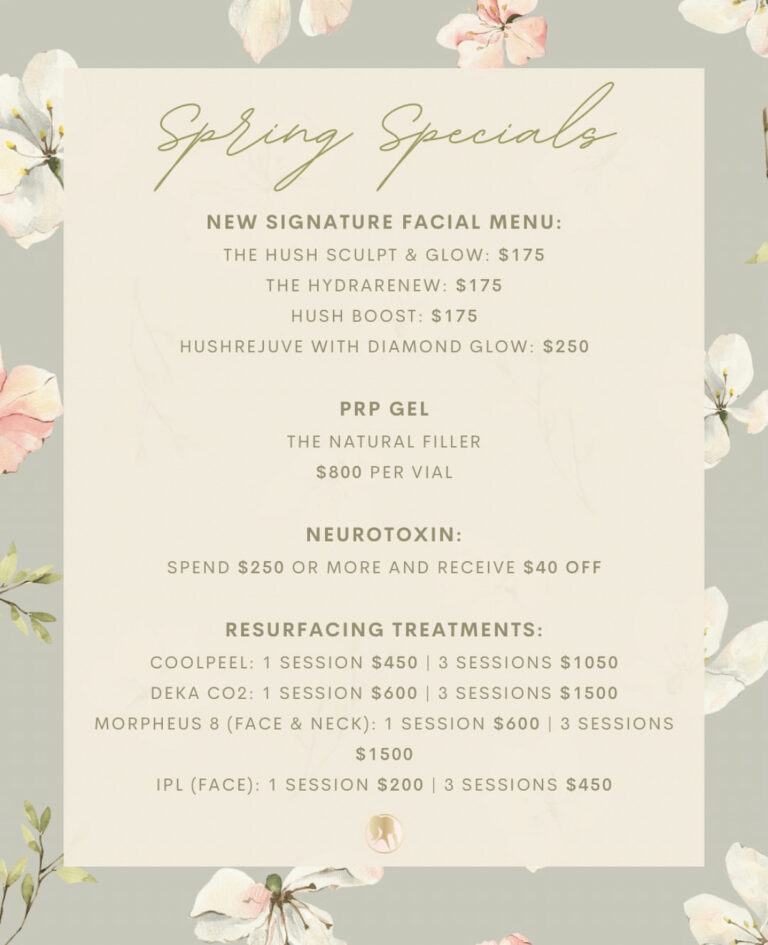Botox for TMJ disorder
Jaw tension caused by teeth grinding, over-active masseter muscles, or jaw clenching due to stress can lead to severe pain and discomfort along the jaw, called the temporomandibular joint, or TMJ.
A neurotoxic protein called Botox may be used to treat the signs and symptoms of TMJ problems. If previous treatments haven’t helped, you could benefit from this one the most. Botox for TMJ disorder can help with the following symptoms: jaw tension, headaches due to teeth grinding, and lockjaw in cases of severe stress.
What Is TMJ Disorder?
Your TMJs connect your jaw and your temporal bones and are situated in front of each ear. When chewing, yawning, or speaking, those with TMJ disorder may suffer painful and noisy cracking in the jaw. Other symptoms often include jaw pain, earaches, headaches, neck and shoulder pain, and more.
There are many potential causes of TMJ disorder, which may include bruxism (teeth grinding), clenching your teeth, misaligned jaws, stress, and arthritis. All of these problems may put too much strain on the muscles around the TMJ and cause persistent discomfort.
Botox for TMJ can help reduce pain by relaxing the over-stressed and strained muscles. You can also combine this therapy with an oral appliance to further reduce your symptoms and promote TMJ healing.
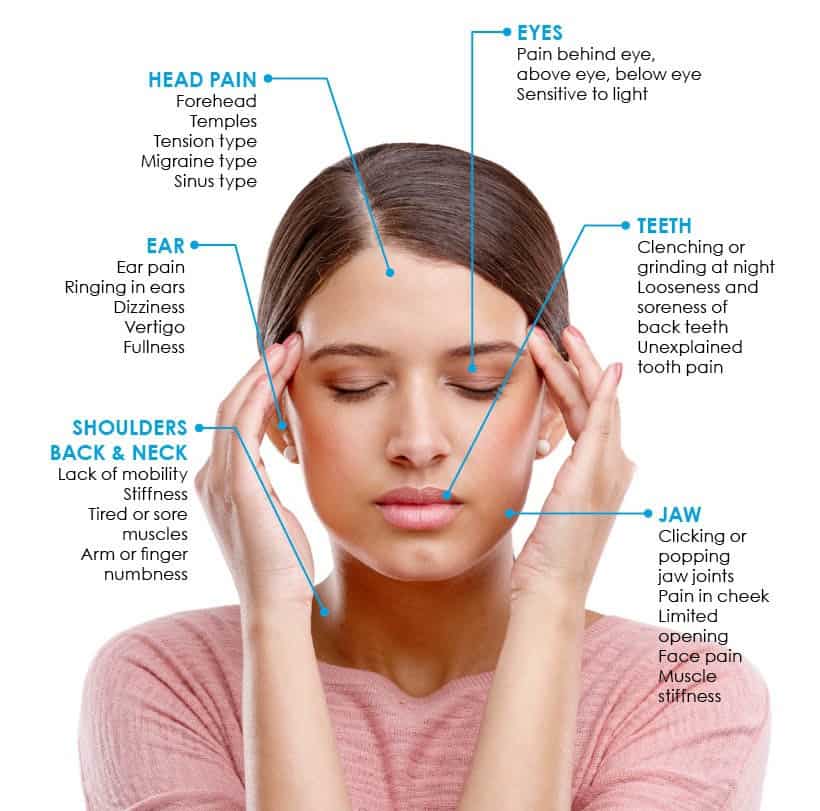
What Is Botox?
Botox is one of the top injectable treatments for lines and wrinkles. The solution contains small amounts of purified botulinum protein.
These substances, when injected into certain areas, stop the nerve impulses that trigger muscle contraction. Although the skin’s fine lines and wrinkles are clearly caused by muscular contraction, the TMJ can also become painful. Botox for TMJ is one of the alternative treatment options.
Why does Botox help with TMJ disorder?
Some people recognize Botox as an injectable cosmetic. Others know it as a toxin. It may surprise members of either group to learn that it is advised for the treatment of TMJ disorder. Botox has been used effectively by medical professionals as a TMJ therapy option for a while.
Many TMJ sufferers battle with the adjacent muscles’ spasms, which irritate their jaw joints. They may grind their teeth or clench their jaws. Botox injections that target specific muscles weaken them slightly, prompting these muscles to relax. This doesn’t interfere with normal activities like chewing or talking. However, it does take some pressure off the joints, allowing them to heal.
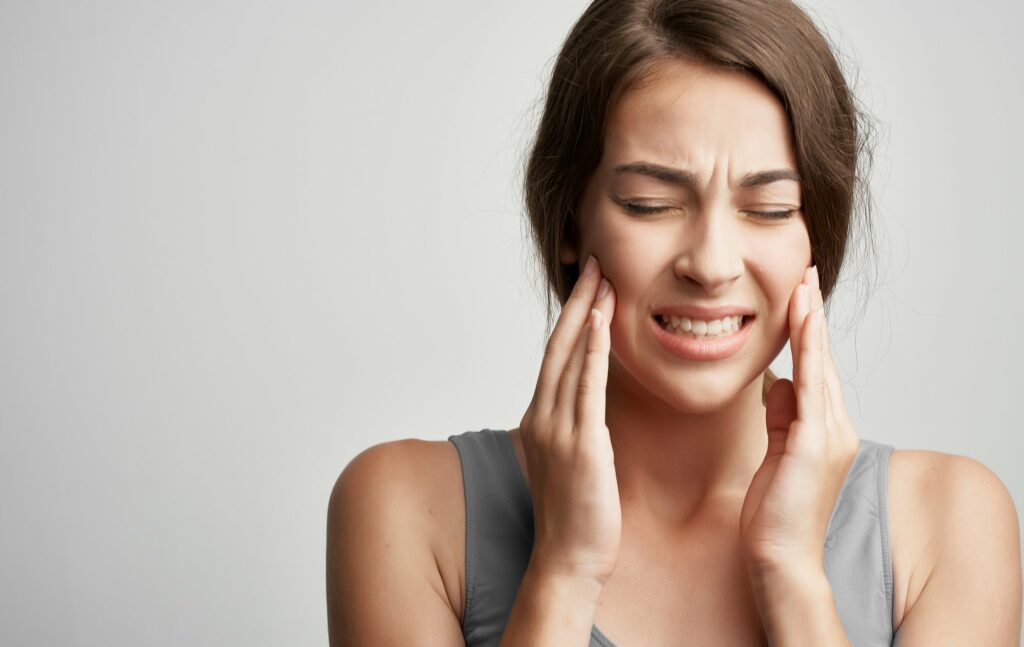
Benefits of Botox for TMJ
When less invasive and conservative treatments for TMJ have failed to yield significant relief from TMJ symptoms, then Botox may be considered. Though Botox for jaw pain is usually recommended to alleviate the discomfort, it is not the only benefit you can get from the TMJ Botox treatment. The benefits of Botox for TMJ treatment include:
- Prevent stiff muscles and jaw tension
- Reduce the frequency of severe symptoms
- Treat teeth grinding
- Help relieve pain from headaches and migraines
- Reduce TMJ-associated pain
- May create a slimming effect with masseter Botox
- Better sleep and relaxation
- Decreased anxiety
- Protection of teeth against sensitivity and conditions like bruxism
- Allows for normal jaw movements needed for everyday life
- Safe and effective
- Widely used to treat TMJ
- Non-surgical and minimally invasive
- Virtually painless
- Repeated treatment may help reduce the severity and frequency of symptoms over time
- In-office procedure
- Little to no downtime
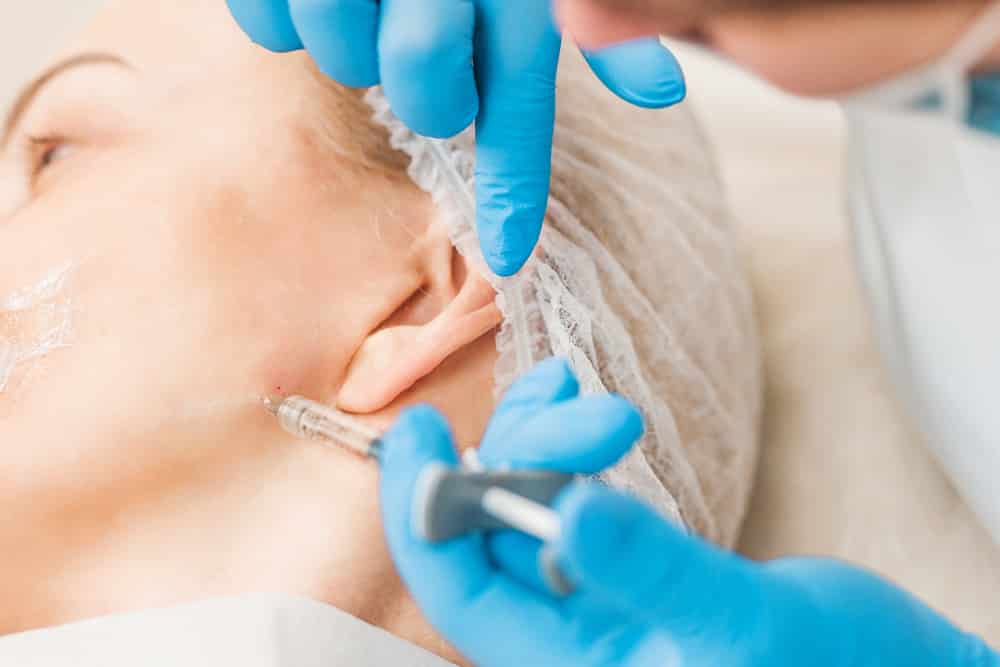
The procedure
Botox for TMJ disorder is a nonsurgical, outpatient procedure. The treatment procedure of Botox is simple. The quantity of Botox injections is decided during the consultation, and pre-and post-care instructions are given.
The actual Botox procedure takes approximately 10 – 30 minutes during which the specialist will inject Botox into symptom areas such as the forehead, temple, jaw muscles, and other areas depending on your specific symptoms. The Botox injection may trigger a slight pain, similar to a bug bite or needle prick which can be relieved by a cold pack or numbing cream.
Following your first treatment, additional treatments will be scheduled. A minimum of three injection appointments over the course of around 6 months is typical. There is no downtime for patients who use Botox for TMJ symptoms as they are able to continue their regular activities as soon as their appointment is over. After treatment, you should keep a straight posture and refrain from touching or massaging the injection sites for a few hours. This aids in limiting the toxin’s ability to spread to further muscles.
How long does Botox for TMJ last?
Within a few days or weeks, you could see positive benefits, with peak effects showing up four to six weeks following treatment. Injections for TMJ do not remain forever, just as Botox treatments are used for cosmetic purposes. It varies from patient to patient, but generally, the effects last three to five months.
Botox injections are typically paired with splint treatment to ensure long-term results because injections must be repeated every few months to retain their beneficial effects.
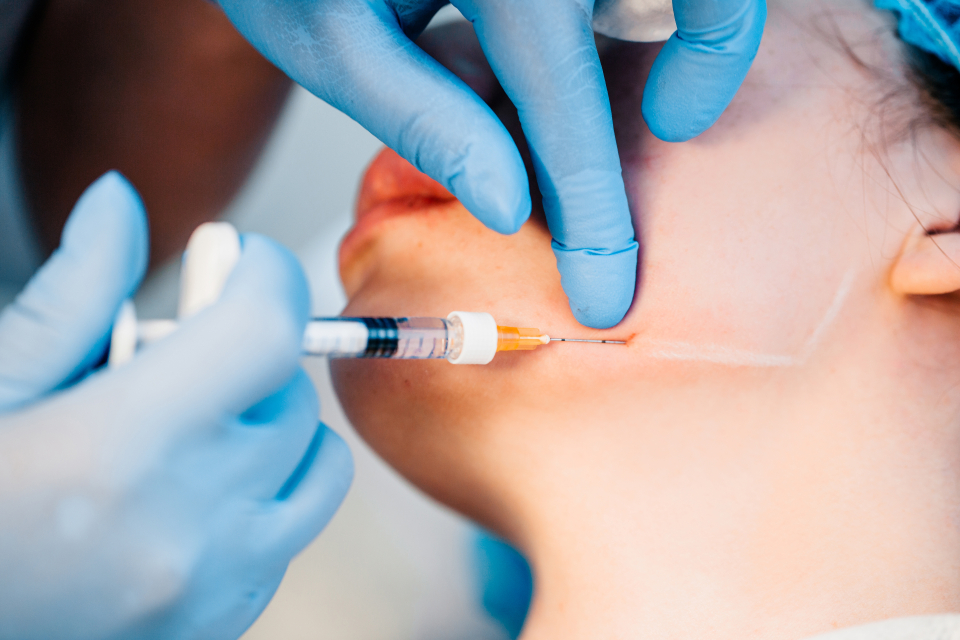
Are there risks to using Botox for TMJ?
Any treatment carries risk, but Botox is generally considered safe and effective. Patients who receive injections for TMJ may experience discomfort redness or bruise at the injection site. Nausea, headache, and muscle weakness have also been reported.
Aftercare and results
After Botox injections, the side effects are generally mild. You could have little bruising, swelling, and pain. These negative effects often disappear swiftly and painlessly. Some people may find using ice will ease some of the pain over the next couple of days. The recommended aftercare may include:
- Sleep with your head slightly elevated for a day or two
- Avoid strenuous activities for about two days
- Keep the skin cool and free of sweat
- Refrain from drinking or smoking
- Do not rub or massage the injection sites
- Wait around two weeks before reaching a final judgment on the effectiveness of the therapy.
As previously said, Botox takes around two weeks to fully take action. Therefore, while you will likely see side effects improve in a few days, the full effect of Botox will likely not take effect for two weeks. You might require a few additional units, which can easily be done at a touch-up session with your injector if after two weeks you feel like you are still experiencing frequent, life-impairing symptoms.
Take Away
TMJ treatment with Botox injections has become extremely popular over the past few years. Botox for TMJ treatment is a viable treatment option in the case of patients who do not respond to conservative treatment methods.

